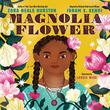Adapting a Zora Neale Hurston story for children is a tall order, but if there’s anyone up for the challenge, it’s scholar Ibram X. Kendi. With books like Stamped: Racism, Antiracism, and You: A Remix of the National Book Award–Winning Stamped From the Beginning (2020), co-written by Jason Reynolds, and Goodnight Racism (2022), illustrated by Cbabi Bayoc, he’s proven that he has a gift for making complex messages accessible for a young audience. Magnolia Flower (Harper/HarperCollins, Sept. 6), illustrated by Loveis Wise, is both a stirring love story and a tale of resistance in the face of oppression. In it, a formerly enslaved Black man and a Cherokee woman who escaped the Trail of Tears fall in love, marry, and have a daughter, who grows up to fall in love herself—with a man her father disapproves of. It made out list of the 100 best picture books of 2022, and Kendi answered some questions via email.
What made you choose to adapt a work by Zora Neale Hurston—and why this one?
I’ve long admired the folklore that she collected, the stories that she wrote, the ways that she captured the complex lives of Black people. I wanted children, including my daughter, to be able to read these stories now. They shouldn’t have to wait until high school or college to hear Zora’s stories.
Magnolia Flower is a love story that is told by a mighty river to a dancing brook. I thought our children should learn about this love story. It would allow them to see that even in the most difficult moments, humans will find the ability to love.
You write for a wide variety of ages, from board books for babies to nonfiction for adults. What challenges do you face?
If it was up to me, I would only write nonfiction for adults. That’s how I was trained. It’s extremely uncomfortable for me to write for children. But at the same time, it is necessary. I wanted to write stories about the beauty of humanity and about racial equality, and I hope that adults can convey those ideas to children. It is a challenge to ensure that the language is developmentally appropriate while holding the complexity.
In your historical note, you say, “But where there is oppression there is resistance. Where there is resistance there is love.” Why is that so important for children to realize?
 It’s important for children, and adults, to be taught the most harmful moments from our past. From slavery to settler colonization, it’s critical to learn about the violence, the harm, the casualties. It’s important for kids to learn the truth about our past. It’s also important to know that despite that pain, people resisted. People resisted slavery. People resisted settler colonialism. It’s critical for us to realize that people resisted because they loved. They loved themselves, they loved their loved ones, and they loved their people. It’s critical for our kids and for adults to understand the relationship between resistance and love.
It’s important for children, and adults, to be taught the most harmful moments from our past. From slavery to settler colonization, it’s critical to learn about the violence, the harm, the casualties. It’s important for kids to learn the truth about our past. It’s also important to know that despite that pain, people resisted. People resisted slavery. People resisted settler colonialism. It’s critical for us to realize that people resisted because they loved. They loved themselves, they loved their loved ones, and they loved their people. It’s critical for our kids and for adults to understand the relationship between resistance and love.
Were you able to do live events for the book this year? Any memorable highlights?
I had the opportunity to go on tour. We went to Chicago, Detroit, Miami, Minneapolis, and Philadelphia to talk about Magnolia Flower. It is always a highlight whenever I shared that Magnolia Flower is the first in a whole series of children’s books that I am adapting based on the work of Zora Neale Hurston. It was certainly a highlight to be in conversation with Loveis Wise at their alma mater, the University of the Arts in Philadelphia. They are an incredible illustrator and thinker. To be in community with them and to talk to the Philadelphia community where I went to grad school was indeed a highlight.
Mahnaz Dar is a young readers’ editor.



































